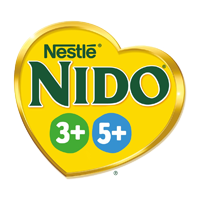Joining hands for the way we parent today
Featured articles
Articles by Stage

33 Weeks Pregnant: Your Baby’s Growth Spurt and What You'll Feel
You’re 33 weeks pregnant and in the home stretch! Discover your baby's incredible developments and find out how to manage symptoms as you prepare for delivery

When Is Your Fertile Window? A Mom’s Guide to Natural Family Planning
Your fertile window holds the key to conception and contraception. Learn to track your cycle, know your signs, and take control of your family planning goals.

Is It Time for a High Chair? Here’s What You Need to Know
A high chair isn’t just for convenience. It helps your child make the mental connection between sitting and mealtimes. Here’s how to choose the right one.

5 Signs of Low Calcium in Kids (and What Parents Can Do)
Is your child crankier or more tired than usual? They might be showing signs of low calcium. Learn what to look for and how to reduce your child's risk.

Singaw or Hand, Foot, and Mouth Disease Symptom? When to Call the Doctor
HFMD is highly contagious. Learn to tell the difference between hand, foot, and mouth disease symptoms and common childhood illnesses.

8 Nutrient-Dense, Energy-Giving Foods Every New Mom Deserves
Mama, we see you. We know you’re giving everything to your baby. But don’t forget. You need nourishment, too! Start with these energy-giving foods.
Featured topics

Maternal Nutrition
Your child’s nutrition starts with your nutrition. Taking the right first steps make a difference to your child’s future growth.

Child Care
More often than not, raising a child is not only a learning experience for your child, but for you and your partner as well.

Feeding & Nutrition
Getting the right nutrition is important for you and your little one. Find tips and nutrition advices to ensure you and your child grow healthy together.

Parenting
Ready to be a parent? We’ve got everything here, from tips to tricks to tools, to help you - both of you - win as parents.

Sickness and Diseases
Stay informed and prepared.

Finances
Discover actionable tips and tools to help you budget smarter, save more, and prepare for life’s big milestones.

Travel & Activities
Explore new destinations, activities, and experiences that turn every family outing into an adventure.

Lifestyle
From wellness routines to home organization, discover tips to enhance your family’s lifestyle and create lasting memories.

Health & Fitness
Get inspired by fitness ideas and health tips that encourage physical activity, promote wellness, and bring families closer.
Tools
parenTeam Community
/
















































